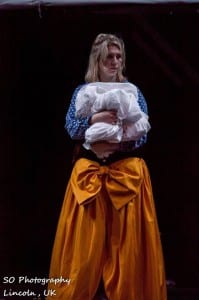Throughout this process, I have always had a personal ideology of failure. This can be attributed to a large array of things, including personal and theoretical, but all of them have come together to create a distaste for ‘perfect’ theatre.
As mentioned previously, I have always wanted to avoid this theatre company being a cliché and for us not to present a glorified version of the world or the issue we are dealing with. This may be viewed as pessimistic but I rarely agree or enjoy theatre that presents a golden version of an issue, simply to attract audience or be nice. To me, this is not staying true to a theatre company’s storytelling role. Plus, I don’t think it presents a fair or honest view of reality. ‘Failure challenges the cultural dominance of instrumental rationality and the fictions of continuity that bind the way we imagine and manufacture the world.’ (Bailes, 2011, 02) shows how this representation of failure, especially within western theatre, can be a powerful tool. I know that therefore I like failure within theatre, it represents the truth about the world and doesn’t add to the imaginative stability of this world.
I think this also links to the type of comedy that naturally came from the development process, with it instantly taking a darker, more sadistic tone, especially more tongue in cheek. A quote I kept coming back to, when writing the script especially, was Freudian view on laughter and how he ‘saw humour as frequently harbouring our aggression towards forces, institutions and individuals that hold power over us.’ (Gray, 2009, 10), which works perfectly with this sense that we wanted to show the unknown everyday story, that is often lost in the sea of big news stories.
This meant that I always wanted the characters to ‘fail’, in some way or other. The character may have succeeded or learnt from their experience but in all cases, they needed to ‘fail’ or return to the position they were in the beginning. I believe that this shows a true representation of the world, especially when it came to escapism. A huge part of escapism is that you don’t actually deal with the issue, but just avoid it…so why should our show be any different.
End of Childhood (O’Donnell, 2017)
The one character that I think this was presented through most was Laura. Throughout the creation process of her, we always had the aim for her to fail. Yes, she may have escaped into her childhood fantasy but she was always going to be dragged back to her harsh reality. This is shown in the line that ends her scene, showing that her fairy tale was a lie all along and was destined to fail, unlike a fairy tale usually does. Of course, this was seen throughout all the characters, but Laura’s was the harshest to deal with. Thus, achieving the effect of failure that I wanted in this play and presenting a real view of the world, something Fragment wanted to do.
Works Cited
O’Donnell, S. (2017) Fragment Theatre Company’s Tech and Dress Run.
Bailes, Sara Jane. (2011) Performance Theatre And The Poetics Of Failure. 1st ed. London: New York, 2011. Print.
Gray, Jonathan. (2009) Satire TV: Politics and Comedy in the Post-Network Era. 1st ed. London: 2011. Print.

Leave a comment